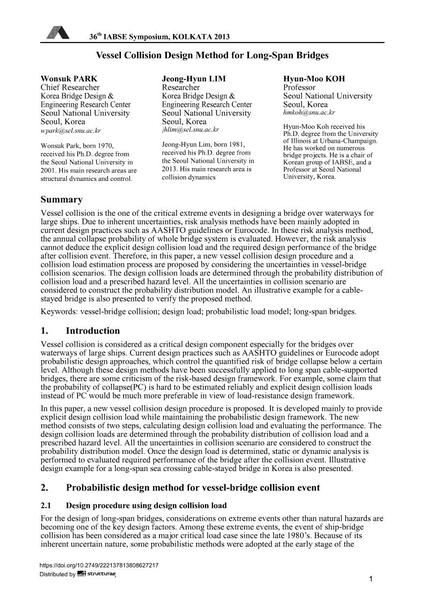Vessel Collision Design Method for Long-Span Bridges

|
|
|||||||||||
Bibliografische Angaben
| Autor(en): |
Wonsuk Park
Jeong-Hyun Lim Hyun-Moo Koh |
||||
|---|---|---|---|---|---|
| Medium: | Tagungsbeitrag | ||||
| Sprache(n): | Englisch | ||||
| Tagung: | IABSE Symposium: Long Span Bridges and Roofs - Development, Design and Implementation, Kolkata, India, 24-27 September 2013 | ||||
| Veröffentlicht in: | IABSE Symposium Kolkata 2013 | ||||
|
|||||
| Seite(n): | 1-7 | ||||
| Anzahl der Seiten (im PDF): | 7 | ||||
| Jahr: | 2013 | ||||
| DOI: | 10.2749/222137813808627217 | ||||
| Abstrakt: |
Vessel collision is the one of the critical extreme events in designing a bridge over waterways for large ships. Due to inherent uncertainties, risk analysis methods have been mainly adopted in current design practices such as AASHTO guidelines or Eurocode. In these risk analysis method, the annual collapse probability of whole bridge system is evaluated. However, the risk analysis cannot deduce the explicit design collision load and the required design performance of the bridge after collision event. Therefore, in this paper, a new vessel collision design procedure and a collision load estimation process are proposed by considering the uncertainties in vessel-bridge collision scenarios. The design collision loads are determined through the probability distribution of collision load and a prescribed hazard level. All the uncertainties in collision scenario are considered to construct the probability distribution model. An illustrative example for a cable- stayed bridge is also presented to verify the proposed method. |
||||
